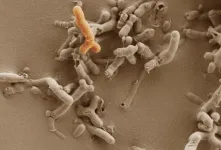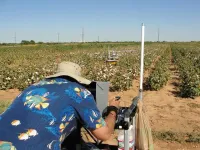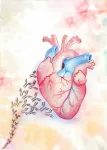The proof-of-concept study, from the Wellcome Sanger Institute, the University of Oslo, Fondazione IRCCS Policlinico San Matteo in Italy, and collaborators, details a new deep sequencing approach that captures all the common infectious bacteria in a hospital at once. Current methods culture and sequence all pathogens separately which takes longer and requires more work.
Published today (20 August) in the Lancet Microbe, the study captured the whole population of pathogenic bacteria found in multiple hospital intensive care units (ICUs) and ordinary wards during the first wave of the 2020 COVID-19 pandemic. Researchers could see the type of bacteria patients had, including any well-known antibiotic-resistant pathogens found in hospitals.
They discovered that each ICU patient tested in the study was colonised by at least one such treatment-resistant bacteria, while the majority were colonised by several of them simultaneously.
Researchers believe their approach could be integrated with existing hospital clinical surveillance systems. As drug resistance is a widespread issue in hospitals and other clinical settings, this system could identify, track and limit the spread of common multiple treatment-resistant bacteria at the same time.
Bacteria are commonly found in or on the body without causing harm, known as colonisation. However, if certain strains get into the bloodstream due to a weakened immune system they can cause severe and life-threatening infections, unless they can be effectively treated with antibiotics.
As an added challenge for healthcare providers, some of these bacteria are antibiotic-resistant (AMR). Infections caused by AMR bacteria are a major issue in hospitals, with these treatment-resistant bacteria predicted to cause more deaths than cancer by 20501. While some hospitals test for AMR bacteria on arrival, no system effectively tracks all multi-drug resistant bacteria throughout a hospital.
Over the last 15 years, genomic surveillance has become a powerful tool for tracking pathogen evolution and transmission, giving critical insights to help manage the spread of disease.
However, current methods involve culturing a single strain of bacteria in a sample at a time and then conducting whole genome sequencing for all of them separately. This is a labour-intensive process, which can easily take several days and only provides a partial snapshot of all the clinically relevant bacteria found in a sample.
In this new study from the Wellcome Sanger Institute, the University of Oslo, Fondazione IRCCS Policlinico San Matteo in Italy, and collaborators, the team developed a new approach that captured whole genome sequencing data across multiple pathogens at once. This is known as a ‘pan-pathogen’ deep sequencing approach and can provide genomic data as rapidly as hospitals can process the samples.
The team took samples from 256 patients in an Italian hospital, capturing bacteria found in the gut, upper airways, and lungs. The 2,418 DNA samples could be associated with 52 species of bacteria. 66 per cent (2,148) of these were made up of different strains of the seven most common bacterial infections2 seen in hospitals.
They found that patients in ICUs were colonised by at least one bacterium with the potential to cause severe disease at any time, and that clinically important AMR genes were present in at least 40 per cent of these.
The team effectively mapped the spread of hospital bacteria across a 5-week sampling timeframe, allowing them to also predict which bacteria were most likely to appear in infections acquired while in the hospital.
Professor Jukka Corander, co-senior author from the Wellcome Sanger Institute and the University of Oslo, said: “Our method that captures genetic information on multiple bacterial strains at the same time has the potential to transform the genomic surveillance of pathogens, enabling us to capture essential information both quicker and more comprehensively than ever before without losing resolution. With our proof-of-concept study, this approach can now confidently be used in future research to capture the full breadth of high-risk bacteria in an area, and hopefully by hospitals to help track and limit the spread of treatment-resistant bacteria.”
Dr Harry Thorpe, first author from the University of Oslo and visiting worker at the Wellcome Sanger Institute, said: “Our study is an example of how we can use the power of genomics to create a full picture of antibiotic-resistant bacteria across intensive care units and also elsewhere in hospitals. Antibiotic-resistant bacteria evolve and spread quickly, and therefore our tracking methods have to keep pace with them. Knowing the sequencing of all the bacteria in a sample gives a more complete picture of the diversity found in an area, which is crucial in predicting risk and understanding the external factors involved in the spread of a specific strain.”
Professor Fausto Baldanti, Director of the Microbiology and Virology Unit, Fondazione IRCCS Policlinico San Matteo, said “Our Unit detected the first COVID-19 case in the Western world, and we witnessed the dawn of the pandemic along with the huge scientific effort worldwide on SARS-COV2. However, the study by our researchers showed that superbugs did not disappear. Indeed, the simultaneous presence of multiple species of drug-resistant bacteria in ICU wards admitting COVID-19 patients could have been a relevant component of the clinical manifestation of the new disease in those dramatic days.”
Professor Nicholas Thomson, co-senior author from the Wellcome Sanger Institute, said: “Antibiotic-resistant infections are an ongoing issue in hospitals, and while healthcare professionals work hard to minimise these as much as possible, it’s hard to fight against something you can’t fully see. Integrating a deep genomic sequencing approach into healthcare systems in this way gives those working in hospitals a new opportunity to see and track these bacteria, assisting in diagnosing infections and allowing outbreaks to be identified and controlled. Integration of this approach could help develop and improve guidelines for assessing and managing the risk of treatment-resistant infections for all the patients in a hospital, particularly those on intensive care units.”
ENDS
Contact details:
Rachael Smith
Press Office
Wellcome Sanger Institute
Cambridge, CB10 1SA
+447827979492
Email: press.office@sanger.ac.uk
Notes to Editors:
Antimicrobial Resistance: Tackling a crisis for the health and wealth of nations, Jim O’Neill (2014). Available at: https://amr-review.org/sites/default/files/AMR%20Review%20Paper%20-%20Tackling%20a%20crisis%20for%20the%20health%20and%20wealth%20of%20nations_1.pdf This research focused on: A. baumannii, Klebsiella pneumoniae, Pseudomonas aeruginosa, Enterococcus faecium and faecalis, Escherichia coli, Staphylococcus aureus. Publication:
H. Thorpe, M, Pesonen, M, Corbella, et al. (2024) Pan-pathogen deep sequencing of nosocomial bacterial pathogens during the early COVID-19 pandemic, spring 2020: A prospective cohort study. Lancet Microbe. DOI: 10.1016/S2666-5247(24)00113-7
Funding:
This research was part-funded by Wellcome, the European Research Council, Academy of Finland Flagship program, the Trond Mohn Foundation, and the Research Council of Norway. A full acknowledgement list can be found in the publication.
Selected websites:
Fondazione IRCCS Policlinico San Matteo in Italy
IRCCS Polyclinic “San Matteo” Foundation is a public teaching & research hospital of national and international importance. An academic medical center among the most important in Europe. It’s characterized by a strong vocation for the integration of scientific research, assistance and teaching and by the offer of highly specialized hospitalization and treatment services and, above all, for highly complex diseases. San Matteo Polyclinic is already the leader of a national program on emerging infectious diseases. Here, a cutting-edge center at an international level will be created for the treatment of infectious diseases and for the management of any future emergencies. A high level of isolation department where patients suffering from highly contagious pathologies can be accommodated, within which Bio-Safety measures (BSLBiosafety Level) 3 or 4 are applied including, for example, negative pressure ventilation, ventilation system with constant air changes, programmed accessibility, particular management of waste or biological samples.
Find out more at www.sanmatteo.org or follow us on Linkedin and Youtube.
The Wellcome Sanger Institute
The Wellcome Sanger Institute is a world leader in genomics research. We apply and explore genomic technologies at scale to advance understanding of biology and improve health. Making discoveries not easily made elsewhere, our research delivers insights across health, disease, evolution and pathogen biology. We are open and collaborative; our data, results, tools, technologies and training are freely shared across the globe to advance science.
Funded by Wellcome, we have the freedom to think long-term and push the boundaries of genomics. We take on the challenges of applying our research to the real world, where we aim to bring benefit to people and society.
Find out more at www.sanger.ac.uk or follow us on Twitter, Instagram, Facebook, LinkedIn and on our Blog.
About Wellcome
Wellcome supports science to solve the urgent health challenges facing everyone. We support discovery research into life, health and wellbeing, and we’re taking on three worldwide health challenges: mental health, infectious disease and climate and health. https://wellcome.org/
END






